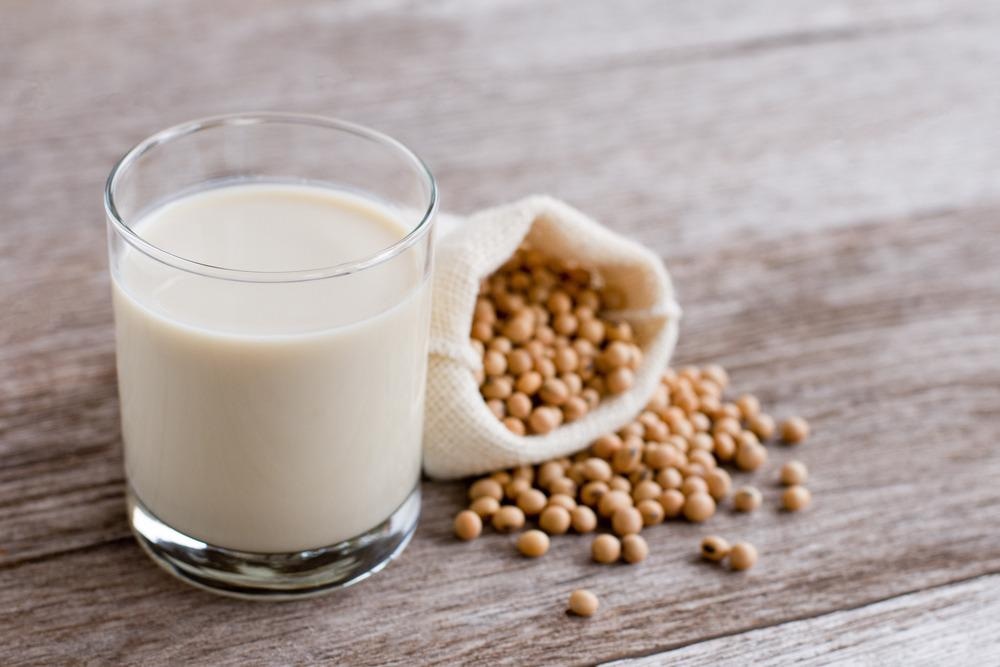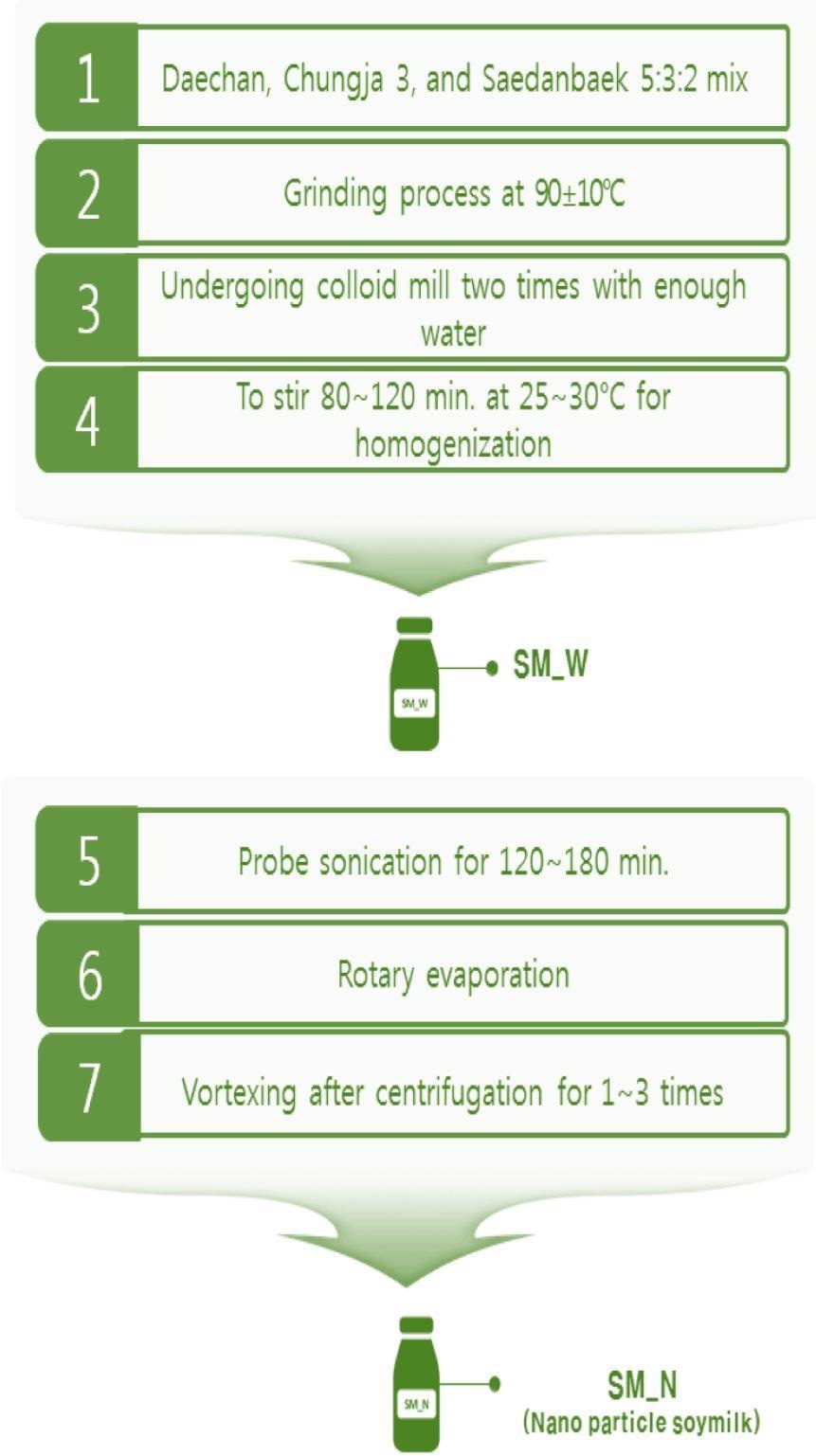The present study reported in the journal Foods has shown the potential of nanotechnology in enhancing the sensory attributes of soy milk by forming nano soy milk.

Study: Development of Nano Soy Milk through Sensory Attributes and Consumer Acceptability. Image Credit: NIKCOA/Shutterstock.com
Soy milk is a plant beverage with a high amount of nutritional value. It has been reported to show an abundance of proteins, fatty acids, and many ingredients beneficial for health.
This plant beverage has shown antioxidant, anticancer, antidiabetic, and hypocholesterolemic properties. In addition, it is reported to be effective for osteoporosis, kidney disease, and high blood pressure treatment.
In spite of the high nutritional values of soy milk, only 13% of the households in the USA are reported to purchase it. The main reason for reduced acceptance is reported to be its raw-beany flavor and its unique taste.
The taste and nutrients of soy milk are dependent on factors such as the variety of the soya bean, geographical differences, and manufacturing techniques.
Studies on improving the flavor of soy milk, while maintaining nutritional benefits have been reported. These investigations have mainly dwelled on the analytical and sensory attributes of soy milk, and on consumer test results.
However, research into the correlation between sensory analysis and the effects of processing methods is rarely reported.
Could Nanotechnology be a Solution to Problems of Soy Milk?
Nanotechnology has shown wide implications for various sectors, including food processing, food packaging, food safety, and quality of goods.
Little research has reported that incorporating nanomaterials has enhanced the bioavailability of bioactive compounds such as calcium, vitamins, and iron.
Nanoencapsulation techniques were studied to affect the sensory perception of food by controlling flavor release and flavor retention.
Improved food characteristics, such as particles and flavor, have been reported with nanotechnological techniques. In addition, nanomaterials in food have reported enhanced production efficiency, enhanced taste, and nutrient absorption.
Despite the high nutritional value of soy milk, the problem of a raw beany flavor and residual after-taste make it less acceptable to consumers. Hence, in the present study, nanotechnology has been utilized to develop nano soy milk with a more palatable flavor.
Researchers investigated the sensory characteristics and consumer acceptance of three commercially available and two laboratory-developed soy milk.

Laboratory soy milk production process. Image Credit: Ju, S., et al
Analysis of Different Types of Soy Milks:
The three commercially available soy milk products taken for the study were stable, sugar-free, and contained no additives. The other two developed in the lab contained soybeans with additional isoflavone and anthocyanin contents and higher protein contents than general soybeans.
One of the lab-manufactured soy milk samples also contained nanoparticles that increased digestion and absorption. The nano soy milk synthesis procedure involved probe sonication, rotary evaporation, vortexing, and centrifugation.
Twenty different sensory attributes according to aroma, flavor, and texture were analyzed for samples.
Consumer acceptance was tested with 100 participants, with results showing no significant difference between soy milk samples.
The study showed that one of the commercial soy milk samples reported the highest score of overall liking in terms of flavor, mouthfeel, sweetness, and repeated use.
The two lab synthesized soy milk samples showed properties closely related to the commercial sample that obtained the highest scores. These three samples were closely related to cooked soybean, good flavor, sweetness, browny texture, roasted soybean, and astringent properties.
Overall Outcome of the Study:
Clarity on the improved sensory attributes of nano soy milk was not reported in this study; however, it presented the potential application of nanotechnology in soy milk development.
The rules and guidance regarding the public health benefits and risks have placed a huge challenge for applying nanotechnology in the food industry. Furthermore, the results obtained in the present study could be taken as basic data for the application of food nanotechnology and the expansion of the soy milk market.
Continue reading: Measuring the Particle Size Distribution of Chocolate.
Reference:
Ju, S., Song, S., Lee, J., Hwang, S., Lee, Y., Kwon, Y., Lee, Y. (2021) Development of Nano Soy Milk through Sensory Attributes and Consumer Acceptability. Foods, 10, 3014. Available at: https://www.mdpi.com/2304-8158/10/12/3014
Further Reading:
Fukuda, M., Kobayashi, M. and Honda, Y. (2017)Functional Components and Health Benefits of Fermented Soymilk. In Soft Chemistry and Food Fermentation pp. 145-178. Academic Press. Available at: https://linkinghub.elsevier.com/retrieve/pii/B9780128114124000060
Tahir, A., Shabir Ahmad, R., Imran, M., Ahmad, M.H., Kamran Khan, M., Muhammad, N., Nisa, M.U., Tahir Nadeem, M., Yasmin, A., Tahir, H.S. and Zulifqar, A. (2021) Recent approaches for utilization of food components as nano-encapsulation: a review. International Journal of Food Properties, 24 1, pp.1074-1096. Available at: https://www.tandfonline.com/doi/full/10.1080/10942912.2021.1953067
Disclaimer: The views expressed here are those of the author expressed in their private capacity and do not necessarily represent the views of AZoM.com Limited T/A AZoNetwork the owner and operator of this website. This disclaimer forms part of the Terms and conditions of use of this website.